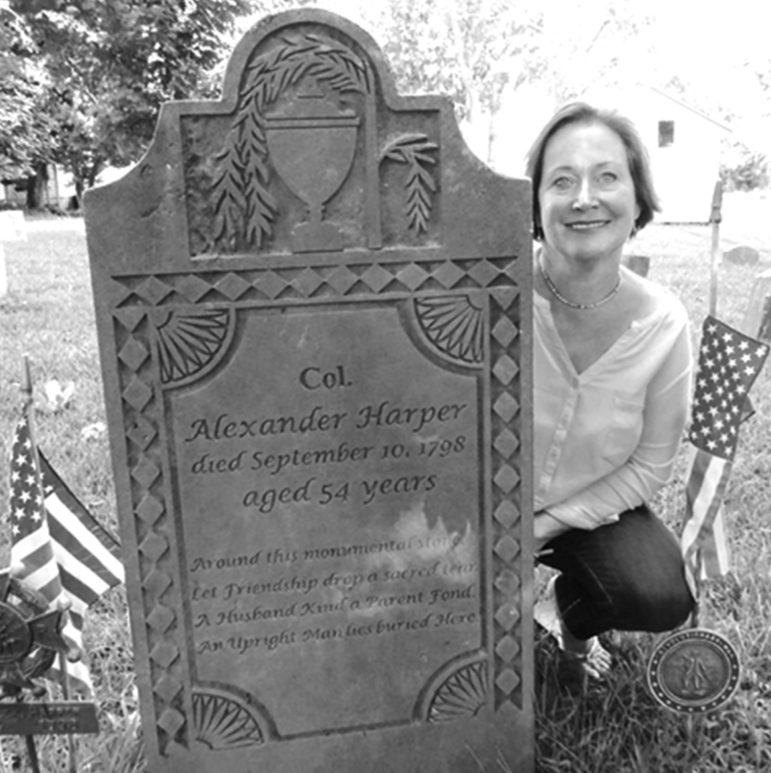
Photo by Greg Scott
The author is pictured in 2015 next to the 1798 grave marker of her fifth great grandfather, Col. Alexander Harper, in the Alexander Harper Memorial Cemetery, Harpersfield, Ohio.
I lived in Suffield from 1985 to 2012 but I grew up in Cleveland, part of Connecticut’s Western Reserve. My Polish maternal grandparents emigrated to America in the early 1900s, and we lived with them for a time in the 1960s. My parents divorced when I was young, and I didn’t have much contact with my father after that so didn’t know much about his roots. While researching my ancestry a few years ago, I was surprised to learn that there were Connecticut connections in his family tree.
Alexander C. Harper, the grandson of Irish immigrants and my fifth great grandfather, was born in 1744 in Middletown. In 1768 Alexander’s father moved his large family to New York where he founded the town of Harpersfield. Alexander became a captain in the Revolutionary War, was captured by Loyalist troops, held prisoner in Canada for almost three years, and promoted to colonel after the war.
In 1798, Col. Harper moved his family from New York and with a few other men bought land in northeast Ohio and established another town named Harpersfield. He died of malaria shortly after settling the town and was laid to rest in a hollowed-out log. Col. Harper was the first white man buried in the Western Reserve and is interred in the cemetery that bears his name, about an hour east of Cleveland.
So, whom did Col. Harper buy the land from? My research turned up a surprising answer — Oliver Phelps and Gideon Granger, both of whom were two of Suffield’s prominent citizens in the late 18th century. They were part owners of the Connecticut Land Company that in 1795 established the three million acre Connecticut Western Reserve. Phelps was its president and largest investor.
I knew Phelps was the Phelps of historic Phelps-Hatheway House fame. I also knew who Granger was. While living in Suffield, I helped a residential builder market the Hatheway Farms development on land that was once part of Phelps’ 250-acre estate. I recommended street names for the project as well as the nameless street that bordered the development and led to the Suffield Post Office. When I learned that Granger was the U.S. Postmaster General from 1801–1814, I recommended that we name the street Gideon Way. A few months ago I was shocked to discover that Granger was my fourth cousin, five times removed.
Go back to Ohio for a minute. The land survey of the Western Reserve was conducted by Seth Pease, another Suffield native. He also drafted the seminal “A Plan of the City of Cleaveland” in 1796. Pease was Granger’s brother-in-law, Pease’s sister Mindwell having married Granger.
I have many relatives – descended from notable ancestors in England and France – who lived and died all over Connecticut and Massachusetts. They fought and died in the Revolutionary War as well as King Philip’s War. A distant cousin is buried in East Windsor, a fourth great grandmother in Northfield, Mass.
I’m a Buckeye by birth. A Nutmegger by heritage. And a Daughter of the American Revolution. My, oh, my.